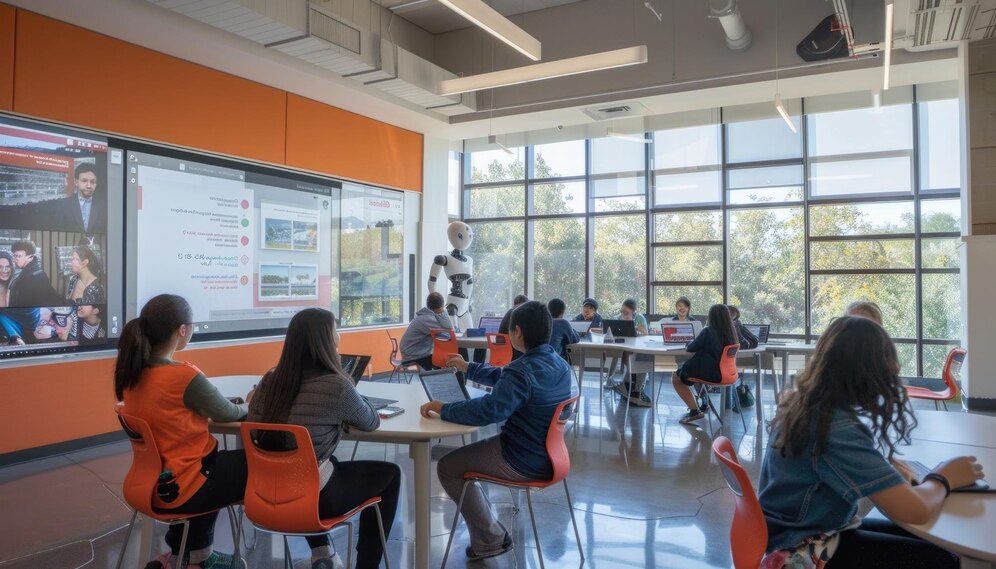Key Points
The Peer Assessment activity provides an opportunity of:
The Fair Allocation Moodle activity provides an opportunity for:
- Student-centred project voting;
- Teacher-centred recommendations by supervisors;
- Transparency of the project allocation procedure;
- Maximisation of student learning satisfaction.

Case Details
This project was initiated to develop a Learning Mall (Moodle)-based online project allocation system for senior students.
Inspiration 1: The student population has expanded significantly in recent years. Previously, we allocated the project based on student and teacher mutual communication. This is fine when you have fewer than 100 students. But for 500 students or more, it would be rather inefficient. So, that inspired us to develop this automatic online process.
Inspiration 2: Some students, although they perform well, are too shy to show themselves to the teachers and to demonstrate their exciting projects. That is why we developed a system which we call a student-centred fair allocation system. We allow those students to select projects online based on their interests. They can then rank those projects as their first/second/third choices, and we allocate the projects based on their rankings. This ensures that we meet the demands of the majority of students. For those students who eagerly want to pursue particular projects, they can carry out these projects, or they can become research assistants for the lecturers so that they can automatically obtain those projects.
We initiated the project to help students and teachers solve genuine real-world problems. It was a good opportunity to try the new technology from the Moodle collection of activities and to support students in expressing their interests and priorities for different projects. We were able to further develop this initiative through a TDF project.
Student responses were substantial since the mechanics of this project ensured the interests of the majority of participants were satisfied. For a small number of students who showed their strong willingness to pursue very specific projects, we also ensured their interests were appeased. On the whole, the students were emotionally happy with the project, which is strongly evidenced by our statistics. Before the Fair Allocation model, we taught around 200 students. After the model was created, we had roughly 500 students. While student participation doubled, the failure and non-submission rates decreased by 50%.
We are very excited when we can serve the students. As a case study, we followed the research design process and collected student feedback. From the results of the survey and the focus group, we found scientific evidence from the structural equation modelling. It tells us what factors influence students’ satisfaction, engagement, and self-efficacy towards perceived justice during the project allocation. It also helped us better understand how students feel about the technology-enhanced solution. Overall, students were quite adaptive to the new technology and provided many good suggestions for future development.
The idea for this project came from the student-centred ideology. Therefore, my takeaway would be putting students at the centre point and attempting to think from their perspective.
In this project, we faced a number of challenges, including coordinating with both supervisors and students, navigating complex administrative procedures, and overcoming obstacles and resistance to implementing new technology. The key lessons learned from this experience include identifying valuable research insights to inform future improvements, and providing practical suggestions and guidance for other educators to reference.
The most important tip is to be patient. Even with the Fair Allocation model, lecturers also have to deal with exceptional cases. The second tip is to be bold. For example, when I had this idea, I discussed it with Na, and we developed new mechanisms together. So, be confident and try to apply your new ideas.
First, be assertive and try it out. Do not be fooled into thinking your ideas are not good enough. Try to develop it into a formal proposal and submit it. Second, build a diverse TDF team.
Despite encountering difficulties, it is important to remain committed to the original plan. Setting short-term and long-term goals can help to stay on track. By actively managing any challenges that arise, and keeping the ultimate outcome in mind, efforts will ultimately be rewarded through meaningful change and innovation.
Technological Toolkit

LMO (Moodle) Fair Allocation activity
LMO (Moodle) Questionnaire activity





Overview
Dr Pengfei Song, a Professor at the Department of Mechatronics and Robotics, used the Fair Allocation activity to allocate projects to his large student cohort, with support from Dr Na Li from the Academy of Future Education.
The Fair Allocation Learning Mall (Moodle) plugin provides the opportunity for teachers to allocate a selection of resources to different students, with the goal of maximising their satisfaction with the eventual distribution.
To achieve this, the activity allows our lecturers to create an activity with multiple choices, which can then be rated by each student. A Moodle algorithm then automatically calculates the most favourable distribution based on each student’s preferences.